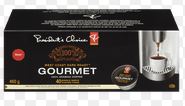A few weeks ago, our favourite K-cups of coffee went on sale. Normally $19.99 for a box of 40, a great deal for Arabica, dark-roast blend, they were $17.99.
A huge sign at the end of the aisle proclaimed the sale price. I stocked up.
The following week, not needing coffee, I glanced up at the same stack of boxes and the same sign as my cart and I rolled past. The sale price was now $19.99 and still claimed to offer $2 off. How could that be? I have purchased these coffee pods for ages. I know them well. I hung a right and went to where the black boxes with white and gold lettering normally live and there it was, clear as day – regular price, $21.99.
Is this how they do it? I realize coffee is one of those products whose price is legitimately increasing but how can they not think a regular customer wouldn’t catch on?
Now I’m getting paranoid. Am I missing it when this happens with other products? Or did I notice this one because my radar is up? I know what our regular purchases cost and at what point it would become too much to bear. I’m aware of the psychology behind shelf-stacking, and impulse buys and putting high-profit items in high-traffic displays. But I don’t think I’ve ever witnessed a product rise $2 in one jump, except perhaps in the produce department. Well played Loblaws, well played.


Lisa, sadly to say, but they have been doing that for decades with virtually all products. The trick is, you put something on sale until you clear out your current stock and then introduce the newly adjusted price. Soft drinks are the worse for this practice.
The food industry is the worst for trying to sneak price increases past the consumer. Most often these days it’s done by reducing the size of the package. Everything is shrinking, from chocolate bars to orange juice. My favorite hot Italian sausages now have one fewer packet – a twenty percent decrease – but the grocery stores point to how they are “holding the price”.
That must be why I haven’t noticed more startling price changes like this one. Thanks Cavan.